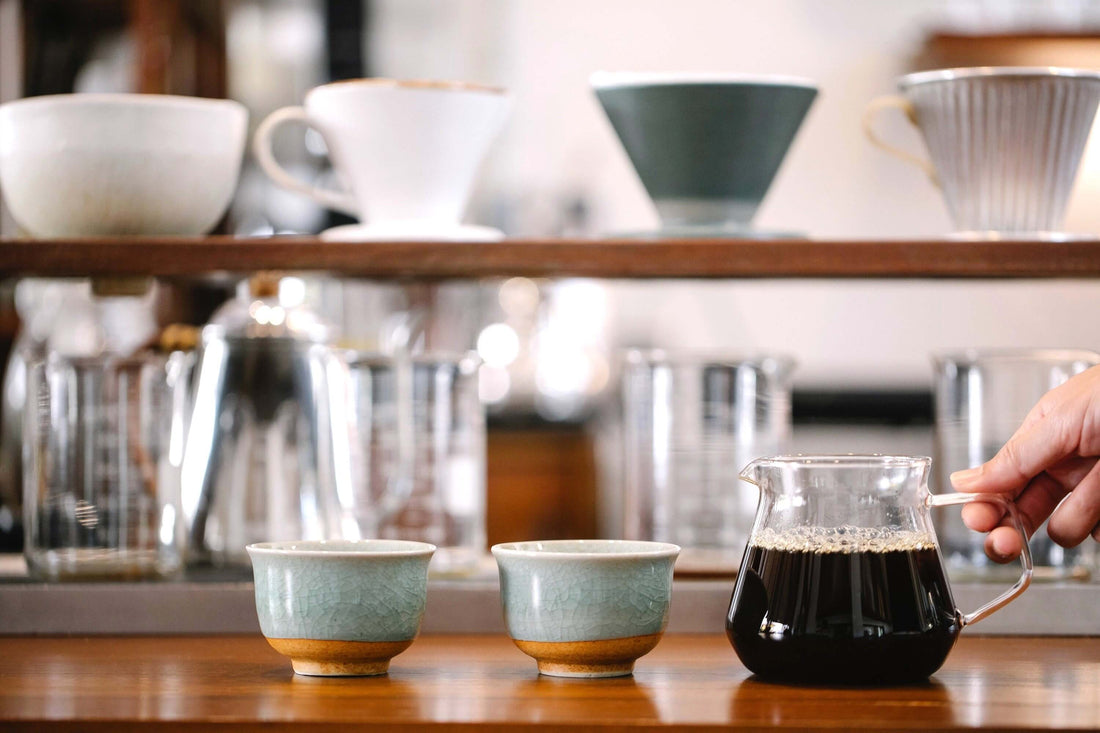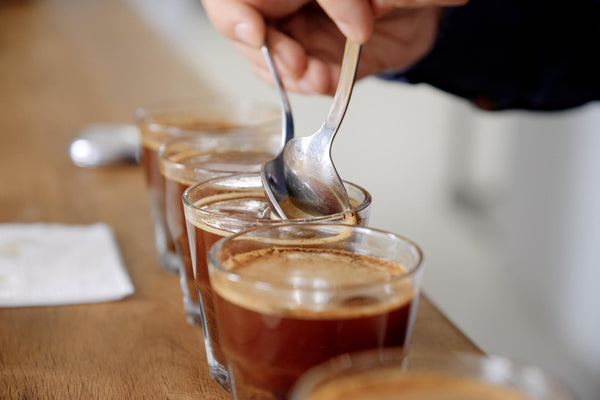
Coffee's Strength and Extraction: The Sensory Part
tai attitude5 min read
When it comes to understanding brewed coffee, the best way is to drink it with wisdom. Particularly when we would like to emphasise the brew itself, not the coffee, then breaking down the brewed coffee we taste into two aspects, its strength and its extraction, is the easier way to identify the brew.
For thoroughness and ease of understanding, this topic content gets published in two parts: the sensory part and the scientific part. Let's begin.
What is Strength
Strength in the context of coffee refers to how strong or weak the coffee beverage is.
The overall strength of coffee is perceived through mouthfeel and intensity.
Mouthfeel is our sense of touch for coffee, including the perception of texture, temperature, or discomfort.
Intensity describes how strong or weak a flavour is. Although intensity is flavour note-oriented, it is about how prominent the flavour is, not what flavour it is.
The caffeine or bitterness content of coffee is not directly related to its strength.
Sensory perception for strength
To perceive how much strength is in brewed coffee, one may focus only on its mouthfeel and intensity aspects.
Coffee with high strength tastes thick, muddy, or heavy.
Coffee with low strength tastes thin, watery, or hollow.
Coffee with ideal strength tastes smooth, silky, and overall delicate.
Strong coffee is just as undesirable as weak coffee, while coffee with ideal strength is the balance point for the best enjoyment.
What is Extraction
Extraction in the context of coffee refers to its overall flavour attributes in the cup.
During coffee brewing, ground coffee comes into contact with water, and ground coffee dissolves soluble compounds in water.
The dissolved content (extracted content) is perceived through acidity, sweetness, bitterness, and overall flavour notes.
Sensory perception for extraction
To perceive how much extraction is in brewed coffee, one may accentuate the sensory aspects of the acidity, sweetness, bitterness, and overall flavour notes in the cup.
Coffee with high extraction (over-extraction) tastes excessively bitter.
Coffee with low extraction (under-extraction) tastes dominantly sour or salty.
Coffee with ideal extraction has a balanced taste of sour, sweet, and bitter; all three tastes are present in harmony.
Under-extracted coffee tastes just as off-putting as over-extracted coffee, while ideal extraction coffee is the balance point for the best enjoyment.
What is responsible for strength and extraction?
During coffee brewing, extraction phase will always happen *one way, in an overlapping order, where ground coffee dissolves its available compound in water based on its size and solubility.
*What is extracted into the cup cannot be undone.
Basically, water binds with the smaller or more simple molecular compounds in ground coffee easier; therefore, these get extracted first, while the bigger or more complex molecular compounds get extracted later.
The barista decides at what point to end the extraction phase (separating water and ground coffee). Depending on which point the barista ends it, the brewed coffee with the total content (total of strength & extraction) can be vastly different. The total content is what the coffee drinker will perceive in its entirety.
Depending on the coffee beans (terroir, processing, and roast) used, the content of lipids, minerals, acids, sugars, and plant fibres varies. For instance, a light-roasted Brazilian coffee has more acids of different types, while a dark-roasted Ethiopian coffee has more plant fibres of different types.
However, since extraction phase will always happen in one-way, overlapping order, we summarised a table below, intended for a general understanding.
 Please zoom in to view or download this table.
Please zoom in to view or download this table.
Lipids contribute mouthfeel, intensity, and aromas to the cup. This is why, during brewing, early drops of brewed coffee liquid look darker and have a higher viscosity.
If extraction ends here, expect brewed coffee to have high strength in terms of viscosity but be under-extracted; it will taste thick, pungent, or oily if using darker roasts. It lacks flavour notes in general.
Minerals contribute saltiness to the cup. These minerals are in small traces and are only detectable by our sensory threshold if brewed coffee is under-extracted.
If extraction ends here, expect brewed coffee to have high strength but be under-extracted; it will taste thick, pungent, salty, sour, or oily if using darker roasts.
Acids that provide sour undertones and aromas to the cup. Depending on the types of acids available, it alters the aroma and overall flavour of the cup significantly.
If extraction ends here, expect brewed coffee to have medium-high strength but still be under-extracted; it will taste thick, sour, or sharp. Typically, the kind of brewed coffee where one or two sips are fine, but drinking the whole cup is torture.
Sugars are responsible for the sweetness and additional mouthfeel in the cup. Sugars, which have more molecular complexity and a bigger structure, get extracted after acids.
If extraction ends here, expect brewed coffee to have near-ideal strength and near-ideal extraction. It tastes juicy, syrupy, floral, fruity, caramel, chocolate, nutty, etc. It is minimally acidic, though.
Plant fibres contribute dryness, astringency, and bitterness to the cup. Being the most abundant yet complex molecular structure, it gets extracted last.
If extraction ends here, expect brewed coffee to have ideal strength and extraction. It tastes silky, delicate, floral, fruity, bittersweet, caramel, chocolate, nutty, etc. Overall balanced and harmony. This is the ideal extraction range for which the barista should aim to end the extraction phase.
However, if the extraction phase continues, plant fibre compounds will be extracted excessively, and the brewed coffee will be over extracted. It will then be more prominent in savoury, bitter, roasty, ashy, etc. flavours, as too much of these will overpower and mask what is already extracted in the cup.
In addition, plant fibre compounds generally do not contribute good mouthfeel and intensity; hence, the strength of the brewed coffee does not increase any further by this point; rather, the brewed coffee gets more dryness, astringency, and bitter flavours from them.
Overall sensory perception (strength + extraction)
What is in the total content forms the complexion of our flavour perception in the cup.
Collectively, it is about hitting the ideal strength and extraction range in coffee brewing, resulting in a cup of brewed coffee that is enjoyable to drink. Because neither too much strength nor extraction in the brewed coffee are desirable.
Although there is an ideal strength and extraction range in which most people find coffee to be most enjoyable, ultimately it comes down to the understanding and preference of the coffee drinker.
No cup of coffee is ever perfect. After all, a great cup of brewed coffee is defined subjectively by the coffee drinker, where the total content he or she experiences simply has more positive attributes that significantly overpower the negatives, hence great.
Some people are more sensitive towards strength (mouthfeel, intensity), while others are more sensitive towards extraction (acidity, sweetness, bitterness, flavour notes). So, which one are you?



